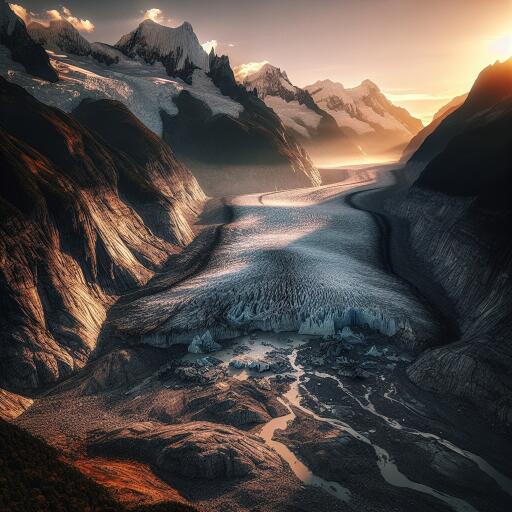
Ritacuba Blanco Glacier’s Rapid Disappearance: A Stark Indicator of Climate Change
In the heart of the Colombian Andes, the Ritacuba Blanco once gleamed as a majestic icy giant within the Sierra Nevada del Cocuy National Park. This defining landmark, not so long ago, was enveloped in a thick shroud of snow and ice. Now, it bears the scars of climate adversity: massive crevices that expose its underlying rock, a clear symptom of an environment in distress.
The Ritacuba Blanco Glacier, a sheer 250 kilometers northeast of Bogotá, is undergoing a dramatic transformation, shedding its icy mass at a rate never before observed. The recent reports point toward a dismal record low, with just 12.8 square kilometers of its once expansive ice coverage remaining, pushing it towards oblivion at an alarming velocity.
The situation is aggravated by a formidable duo: global climate change and the infamous El Niño phenomenon, which have together expedited the glacier’s demise. These environmental crises have not only robbed Colombia of its iconic glacial landscapes – from having 14 glaciated peaks in the early 20th century to a mere six today – but have also disrupted the ecological and hydrological balance crucial for both human and natural habitats.
Glaciers, by their icy nature, are colossal reservoirs. During colder months, they collect and store water in the form of ice, releasing it gradually as they melt. This meltwater is more than just a trickle of freshness; it sustains ecosystems, replenishes freshwater resources, and ensures the well-being of communities that depend on it for agriculture, drinking water, and even hydroelectric power. Yet, with glaciers retreating, these invaluable services are under threat, emphasizing the pressing need to address the root causes of climate change and environmental degradation.
The tragic tale of Ritacuba Blanco is all too familiar on a global scale, mirroring the distress of glaciers worldwide. It serves as a grim reminder of the climate crisis’ accelerating pace, exacerbated by the synergistic impacts of natural climate phenomena like El Niño and human-driven global warming.
El Niño, a periodic climatic event causing oceanic and atmospheric temperature shifts in the Pacific Ocean, is not a newcomer to the climate stage. However, its impact has been magnified by the relentless rise in global temperatures, an undeniable consequence of human activity. This has led to more severe and disastrous outcomes, including intensified glacial melt, catastrophic wildfires, and severe water scarcities challenging our resilience and adaptability.
In the face of such challenges, the preservation of Ritacuba Blanco and glaciers worldwide is not solely dependent on mitigating climate change but also on our collective action towards sustainable living. It invites us to reconsider our energy consumption patterns, advocate for clean energy alternatives, and actively engage in community-led environmental conservation efforts.
Reducing our carbon footprint, embracing renewable energy, and fostering a culture of sustainability could slow the warming that threatens these icy giants. Yet, individual actions alone cannot pivot the trajectory of climate change. It necessitates a concerted global effort, urging policymakers to enact bold climate policies and regulations that curtail greenhouse gas emissions and protect our planet’s ecological integrity.
As Ritacuba Blanco’s ice melts away, it not only narrates the story of a changing world but also calls to action every global citizen. It is a poignant reminder that the battle against climate change is urgent and real. Only through immediate and decisive action can we hope to preserve these magnificent natural treasures for future generations.
The disintegration of Ritacuba Blanco and glaciers across the globe is a warning call too critical to ignore. The time to act is now, ensuring that our environmental legacy is one of resilience, sustainability, and hope. Let’s join hands to combat climate change and save the icy icons of our planet.





Leave a Reply